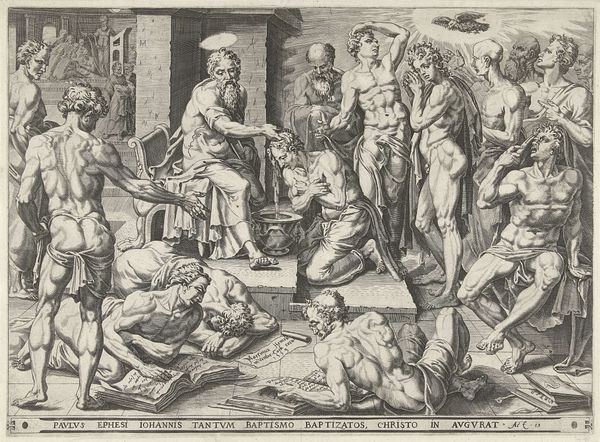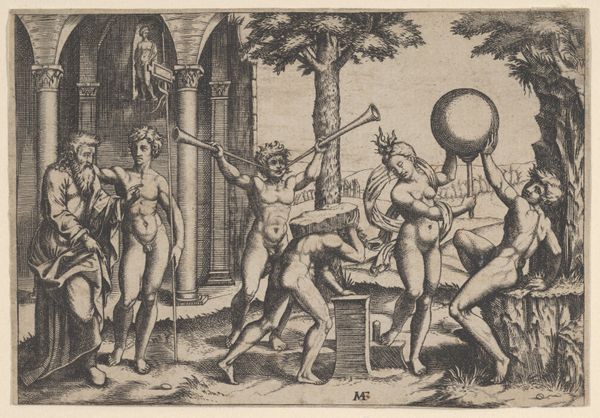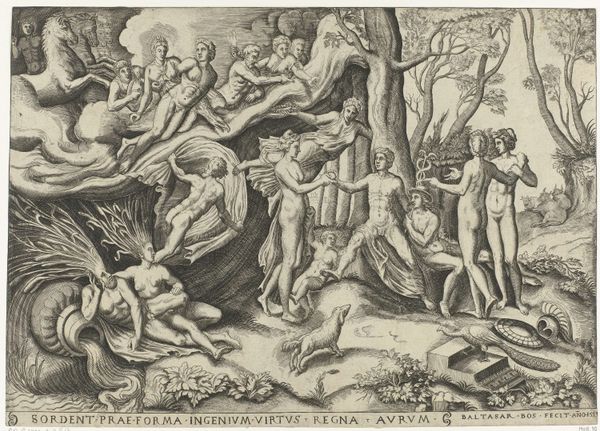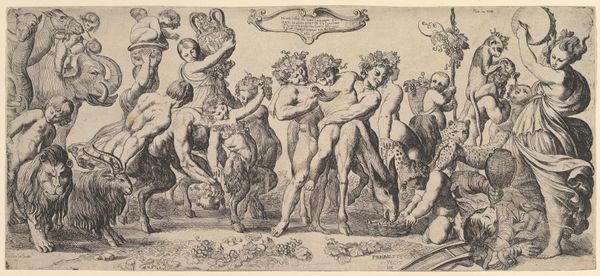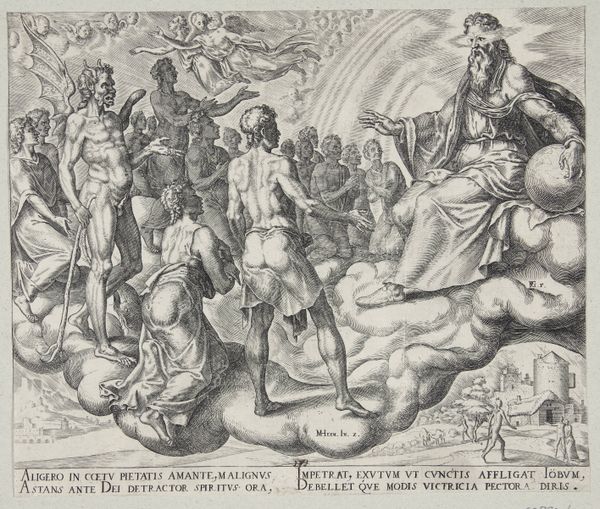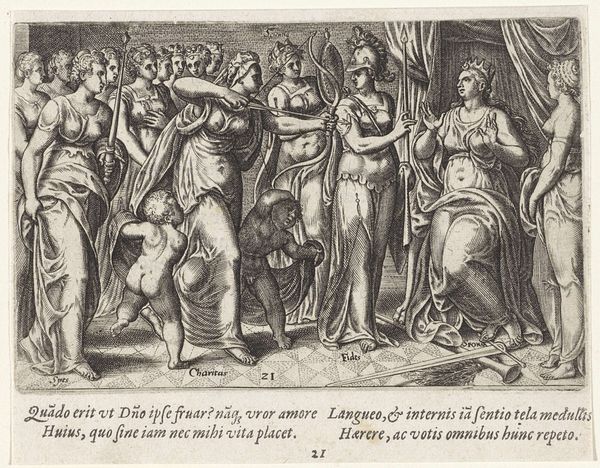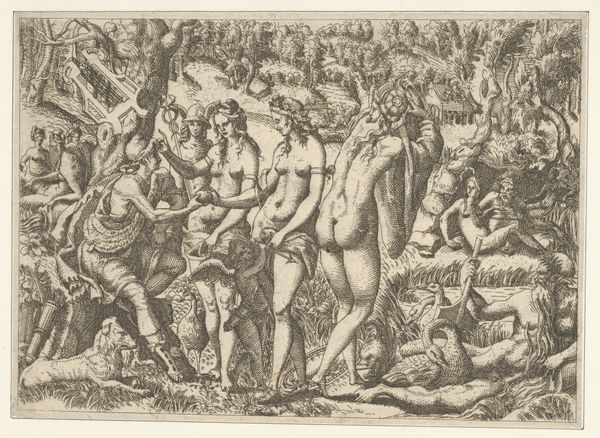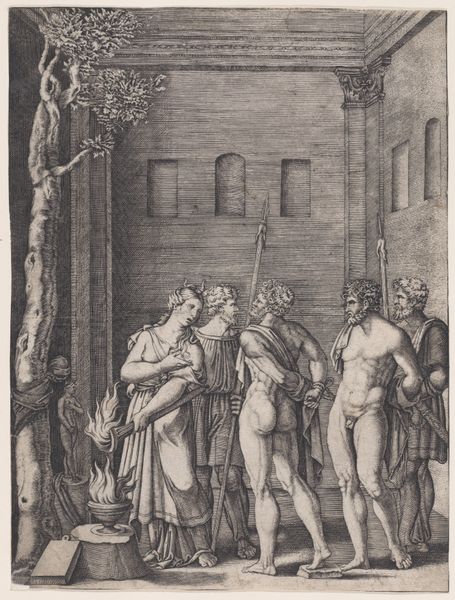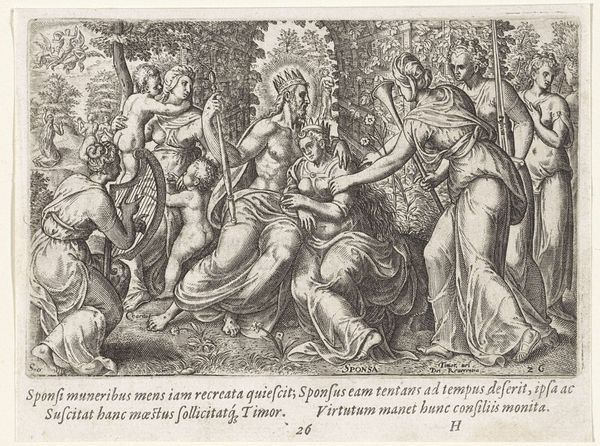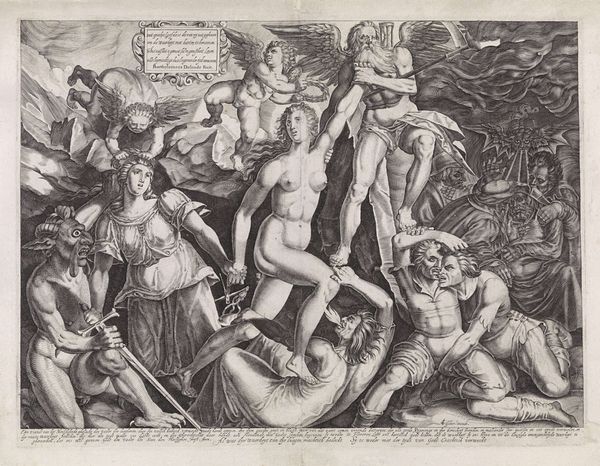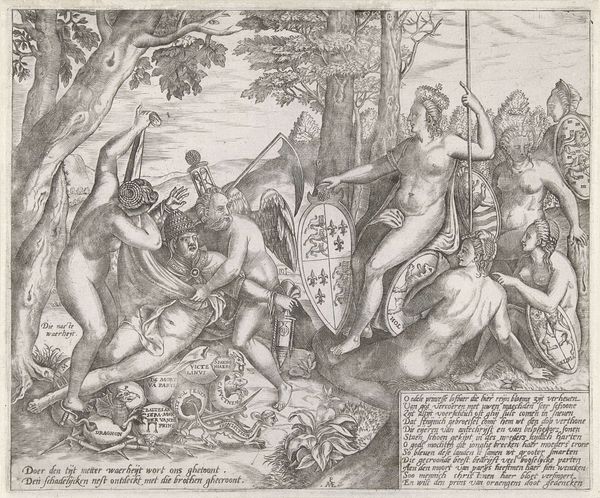
Meleager hunts the wild boar of Caledon 1628 - 1638
0:00
0:00
drawing, print, etching, engraving
#
drawing
#
narrative-art
#
pen drawing
# print
#
etching
#
mannerism
#
figuration
#
sketchwork
#
history-painting
#
italian-renaissance
#
engraving
Dimensions: Sheet (Trimmed): 4 15/16 × 15 3/8 in. (12.5 × 39.1 cm)
Copyright: Public Domain
Curator: Today we're looking at "Meleager hunts the wild boar of Caledon," an etching and engraving by Bernardino Capitelli, dating from about 1628 to 1638. Editor: It’s quite busy, isn’t it? A frantic scene. All those figures compressed into this narrow space – you can almost feel the energy, a kind of contained chaos. Curator: Absolutely. Capitelli brings the ancient Greek myth to life through the Mannerist style. It really underscores the performative aspects of the hunt and male heroism, playing into established codes and hierarchies. Think of it as an exploration of masculinity, class, and the societal rituals that support them. Editor: Thinking about the process – the physicality of etching and engraving seems fitting for the subject. All that fine detail, creating textures that simulate the rough bristles of the boar, the taut muscles of the hunters... It mirrors the labor and skill required for both the artwork and the actual hunt itself. I am interested to understand more about the tools and labor. Curator: It speaks volumes about the values and power dynamics embedded within the narrative itself. Meleager's tale is not simply an action scene; it’s an examination of how male figures gain status. Note also the ambiguous presence of the female hunters, highlighting the complex ways in which gender intersected with ancient political ambitions. Editor: And the printmaking process further complicates that. Each impression reproduces the original, allowing wider access to these supposedly exclusive heroic narratives and blurring the boundaries between luxury and dissemination. This piece can be read at once as a symbol of power, and its democratization via reproductive print technology. Curator: Yes, and what does this imagery tell us about how elites projected their idealized image onto society at large? Capitelli doesn’t just reproduce an old story; he disseminates a political idea. The circulation of images such as these undoubtedly influenced how notions of heroism were constructed. Editor: So, while on the surface, it shows an elite event, it reveals even more about labor and access in early modern Europe. The production of an image that disseminates ideals is complex. Curator: Precisely. I am not sure I will look at boar hunts the same again.
Comments
No comments
Be the first to comment and join the conversation on the ultimate creative platform.

